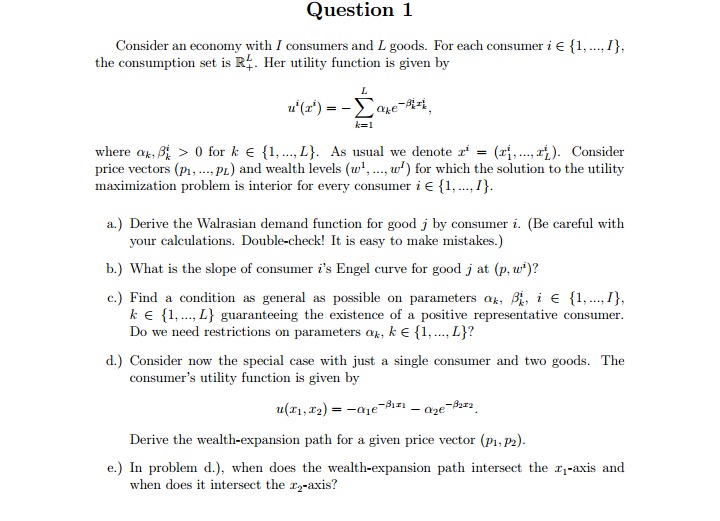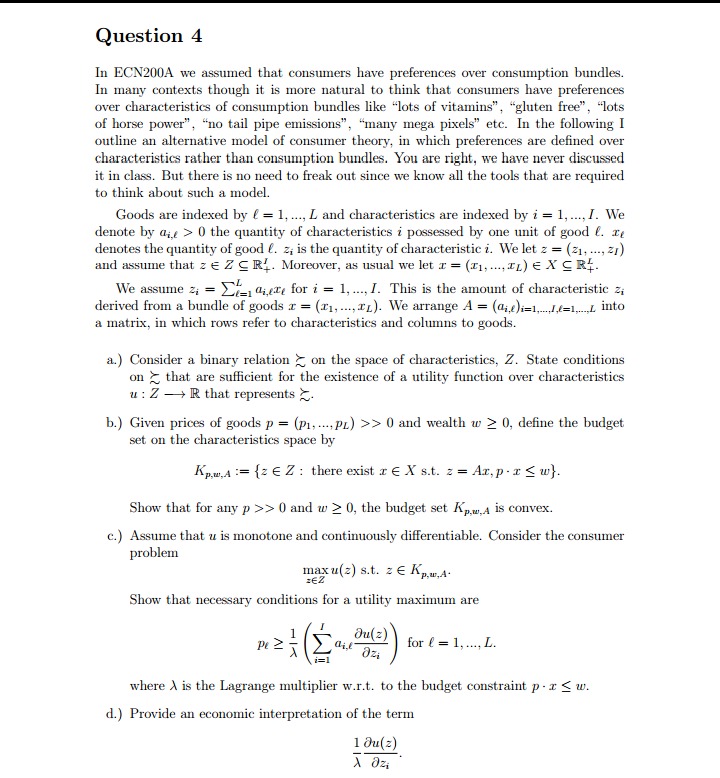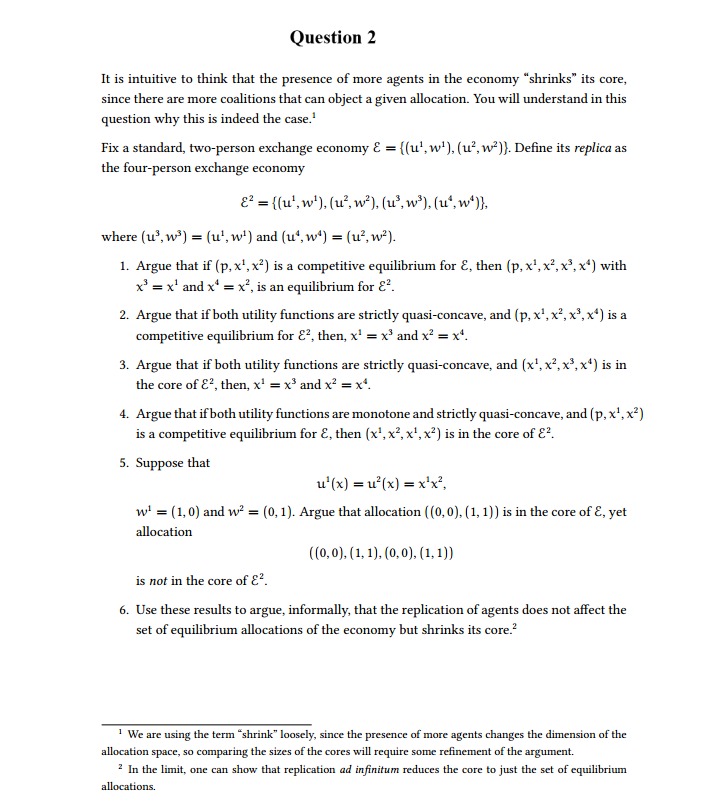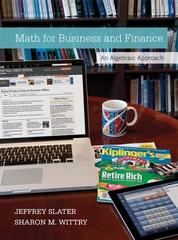


Explain. the following questions as attached below.
Question 1 Consider an economy with / consumers and L goods. For each consumer ie {1, ..., /}, the consumption set is R4. Her utility function is given by u'(x') = - ) are Biz, K=1 where ox, B; > 0 for k E {1. ..., LY. As usual we denote r' = (r;, ..., ;). Consider price vectors (p1, ...,PL) and wealth levels (w], ..., w') for which the solution to the utility maximization problem is interior for every consumer i e {1, .... /}. a.) Derive the Walrasian demand function for good j by consumer i. (Be careful with your calculations. Double-check! It is easy to make mistakes.) b.) What is the slope of consumer i's Engel curve for good j at (p, wi)? c.) Find a condition as general as possible on parameters or, By i e {1, .. .. /}, k E {1,..., L} guaranteeing the existence of a positive representative consumer. Do we need restrictions on parameters ox, ke {1, .... L}? d.) Consider now the special case with just a single consumer and two goods. The consumer's utility function is given by Derive the wealth-expansion path for a given price vector (p1, pz)- e.) In problem d.), when does the wealth-expansion path intersect the r,-axis and when does it intersect the ry-axis?Question 4 In ECN200A we assumed that consumers have preferences over consumption bundles. In many contexts though it is more natural to think that consumers have preferences over characteristics of consumption bundles like "lots of vitamins", "gluten free", "lots of horse power", "no tail pipe emissions", "many mega pixels" etc. In the following I outline an alternative model of consumer theory, in which preferences are defined over characteristics rather than consumption bundles. You are right, we have never discussed it in class. But there is no need to freak out since we know all the tools that are required to think about such a model. Goods are indexed by f = 1, ..., L and characteristics are indexed by i = 1, ..., I. We denote by one > 0 the quantity of characteristics i possessed by one unit of good f. If denotes the quantity of good f. z, is the quantity of characteristic i. We let z = (21, ..., 27) and assume that z e Z C R4. Moreover, as usual we let r = (21, .... II) EX CR. We assume 2 = 2_ died for i = 1, ..., I. This is the amount of characteristic z; derived from a bundle of goods I = (11, ..., IL). We arrange A = (ait)izl,..If=1.,L into a matrix, in which rows refer to characteristics and columns to goods. a.) Consider a binary relation _ on the space of characteristics, Z. State conditions on _ that are sufficient for the existence of a utility function over characteristics u : Z - R that represents _. b.) Given prices of goods p = (p1, ....PL) > > 0 and wealth w 2 0, define the budget set on the characteristics space by Kow,A := {= EZ : there exist r ( X s.t. = = Ar, p- r Sw}. Show that for any p > > 0 and w 2 0, the budget set Kpa,A is convex. c.) Assume that u is monotone and continuously differentiable. Consider the consumer problem max u(z) s.t. z E Kpu,A. Show that necessary conditions for a utility maximum are pe 2 du(z) for { = 1, .... L. where A is the Lagrange multiplier w.r.t. to the budget constraint p. r S w. d.) Provide an economic interpretation of the term 1 du(z) A dziQuestion 2 It is intuitive to think that the presence of more agents in the economy "shrinks" its core, since there are more coalitions that can object a given allocation. You will understand in this question why this is indeed the case.' Fix a standard, two-person exchange economy & = ((u', w' ), (u', w?)). Define its replica as the four-person exchange economy 82 = ((u', w'), (ul, w ), (u', w'), (u', wa)). where (u', w3) = (u', wi ) and (u', wi ) = (uz, w? ). 1. Argue that if (p, x', x?) is a competitive equilibrium for &, then (p, x', x3, x3, x* ) with x' = x' and x* = x', is an equilibrium for &?. 2. Argue that if both utility functions are strictly quasi-concave, and (p, x', x', x3, x* ) is a competitive equilibrium for &', then, x' = x3 and x? = x*. 3. Argue that if both utility functions are strictly quasi-concave, and (x], x3, x3, x* ) is in the core of &', then, x' = x3 and x? = x*. 4. Argue that if both utility functions are monotone and strictly quasi-concave, and (p, x', x?) is a competitive equilibrium for &, then (x], x], x', x?) is in the core of &?. 5. Suppose that u'(x) = u'(x) =x'x. wi = (1,0) and w2 = (0, 1). Argue that allocation ((0, 0), (1, 1) ) is in the core of &, yet allocation ((0, 0), (1, 1), (0, 0), (1, 1)) is not in the core of &?. 6. Use these results to argue, informally, that the replication of agents does not affect the set of equilibrium allocations of the economy but shrinks its core.' We are using the term "shrink" loosely, since the presence of more agents changes the dimension of the allocation space, so comparing the sizes of the cores will require some refinement of the argument. In the limit, one can show that replication ad infinitum reduces the core to just the set of equilibrium allocations












